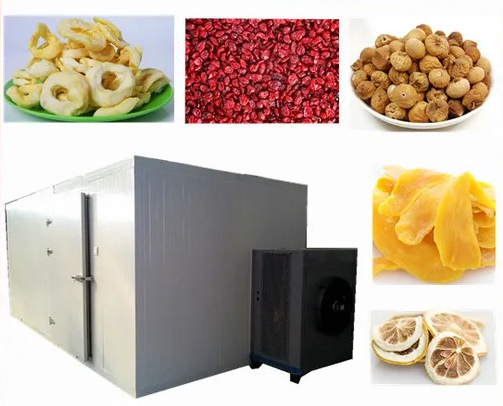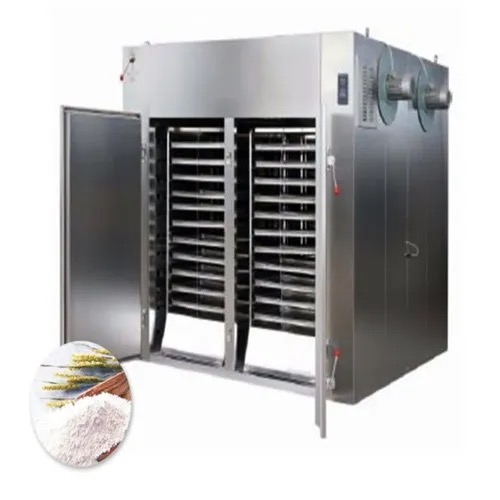
Content Menu
● Understanding Food Dehydrators
● Energy Efficiency of Heat Pump Dryers
>> How Much Energy Does a Heat Pump Dryer Save?
● Benefits of Food Dehydrators
● Choosing the Right Food Dehydrator
● How to Use a Food Dehydrator
● Applications of Food Dehydration
● The Environmental Impact of Food Dehydration
● Comparing Traditional Drying Methods with Heat Pump Dryers
● Conclusion
● FAQ
>> 1. What is a heat pump dryer?
>> 2. How much energy does a heat pump dryer save compared to traditional dryers?
>> 3. Can I use any type of food in a dehydrator?
>> 4. How long does it take to dehydrate foods?
>> 5. Is it worth investing in a food dehydrator?
● Citations:
Food dehydrators are essential tools in the food processing industry, allowing for the preservation and enhancement of various food products. As a manufacturer of food drying machines, understanding the energy efficiency of these devices is crucial, especially when comparing them to traditional drying methods. This article will explore how heat pump dryers can save money on energy bills while providing insights into the benefits and applications of food dehydrators.

Understanding Food Dehydrators
Food dehydrators work by removing moisture from food items, which prevents spoilage and extends shelf life. The process involves circulating hot air around the food, allowing it to dry evenly. There are several types of food dehydrators available on the market, each with its unique features:
- Hot Air Dehydrators: These are the most common types, utilizing a fan to circulate heated air around the food.
- Freeze Dryers: These machines freeze the food first and then remove moisture through sublimation, preserving nutrients and flavor but at a higher cost.
- Microwave Dryers: These use microwave radiation to heat and evaporate moisture quickly but may not be suitable for all types of foods.
- Solar Dryers: Utilizing sunlight, these dryers are eco-friendly but depend heavily on weather conditions.
Energy Efficiency of Heat Pump Dryers
Heat pump dryers are becoming increasingly popular due to their energy efficiency. According to the US Department of Energy, heat pump dryers can save up to 50% on energy costs compared to conventional dryers. They work by extracting heat from the surrounding air and using it to dry food, making them much more efficient than traditional electric or gas dryers.
How Much Energy Does a Heat Pump Dryer Save?
When considering energy savings, it's essential to look at specific examples:
- Example 1: A family using a traditional dryer for 300 cycles per year spends approximately $98 annually. Switching to a heat pump dryer could reduce this cost to around $43, resulting in a savings of $55 per year.
- Example 2: In colder climates, a household may spend about $65 annually with a traditional electric dryer. A heat pump dryer would lower this cost to about $32, saving $33 per year.
These examples illustrate that while heat pump dryers may have a higher initial investment, their long-term savings can be substantial.
Benefits of Food Dehydrators
Investing in a food dehydrator offers numerous advantages:
- Extended Shelf Life: Dried foods can last months or even years without refrigeration, reducing waste and saving money.
- Nutrient Retention: Dehydration preserves essential vitamins and minerals better than other preservation methods like canning or freezing.
- Cost-Effective: Producing dried foods at home is often cheaper than buying pre-packaged options. Bulk purchases of fresh produce can be dehydrated for later use.
- Versatility: Food dehydrators can be used for various products, including fruits, vegetables, herbs, and meats.
- Healthy Snack Options: Homemade dried snacks are free from preservatives and additives found in many store-bought options.
Choosing the Right Food Dehydrator
When selecting a food dehydrator for your business or personal use, consider the following factors:
- Capacity: Determine how much food you plan to dehydrate at once. Larger models are available for commercial use.
- Temperature Control: Look for models with adjustable temperature settings for different types of foods.
- Airflow Design: Even airflow is crucial for consistent drying results. Horizontal airflow systems tend to provide better results than vertical designs.
How to Use a Food Dehydrator
Using a food dehydrator is straightforward:
1. Preparation: Wash and slice fruits or vegetables evenly.
2. Arrange on Trays: Place them in a single layer on the dehydrator trays.
3. Set Temperature and Time: Adjust settings based on the type of food being dried.
4. Monitor Progress: Check periodically to ensure even drying.
5. Store Properly: Once dried, store in airtight containers in a cool, dark place.

Applications of Food Dehydration
Food dehydration has numerous applications across various sectors:
- Home Use: Individuals often use dehydrators for making healthy snacks like fruit leathers or jerky at home.
- Commercial Use: Restaurants and catering services utilize dehydrated ingredients for garnishes or flavor enhancers in dishes.
- Food Preservation: Farmers and gardeners dehydrate surplus produce to prevent waste and maintain availability during off-seasons.
- Emergency Preparedness: Many people dehydrate foods as part of their emergency preparedness plans due to their long shelf life.
The Environmental Impact of Food Dehydration
In addition to saving money on energy bills, using heat pump dryers contributes positively to environmental sustainability:
- Reduced Food Waste: By extending the shelf life of perishable items through dehydration, less food ends up in landfills.
- Lower Energy Consumption: Heat pump dryers consume less energy than traditional methods, reducing carbon footprints associated with energy production.
- Sustainable Practices: Many manufacturers are now focusing on eco-friendly materials and processes in their dehydrators, further promoting sustainable practices within the industry.
Comparing Traditional Drying Methods with Heat Pump Dryers
To better understand the advantages of heat pump dryers over traditional methods, consider the following comparison:
| Feature | Traditional Dryers | Heat Pump Dryers |
| Energy Efficiency | Lower | Higher (up to 50% savings) |
| Operating Temperature | High (over 140°F) | Moderate (95°F - 140°F) |
| Initial Cost | Lower | Higher |
| Long-Term Savings | Limited | Significant |
| Environmental Impact | Higher emissions | Lower emissions |
This table highlights that while traditional drying methods may have lower upfront costs, heat pump dryers offer significant long-term benefits both economically and environmentally.
Conclusion
Heat pump dryers represent an excellent investment for businesses looking to save on energy costs while efficiently preserving food products. With their ability to significantly reduce energy consumption compared to traditional methods, they align well with modern sustainability goals. Additionally, food dehydrators offer numerous benefits such as extended shelf life, nutrient retention, versatility in usage, and healthier snack options.
As you consider investing in food drying technology for your operations or home kitchen, remember that the initial costs can be offset by long-term savings and improved product quality. The combination of energy efficiency and environmental responsibility makes heat pump dryers an ideal choice for anyone serious about food preservation and sustainability.

FAQ
1. What is a heat pump dryer?
A heat pump dryer is an energy-efficient appliance that uses heat from the surrounding air to dry foods instead of relying solely on electric or gas heating elements.
2. How much energy does a heat pump dryer save compared to traditional dryers?
Heat pump dryers can save up to 50% on energy costs compared to conventional dryers according to studies by the US Department of Energy.
3. Can I use any type of food in a dehydrator?
Most fruits, vegetables, herbs, and meats can be dried using a dehydrator; however, some foods require specific preparation or settings for optimal results.
4. How long does it take to dehydrate foods?
Drying times vary based on the type of food and thickness of slices but generally range from 4 hours (for herbs) to over 12 hours (for thicker fruits).
5. Is it worth investing in a food dehydrator?
Yes! Food dehydrators provide cost savings through reduced waste and allow you to create healthy snacks at home without preservatives.
Citations:
[1] https://aradmachineryco.com/article/Food-dehydrator-buying-guide
[2] https://acespace.org/blog/2023/04/06/save-on-an-electric-heat-pump-dryer/
[3] https://etsolutions.in/10-amazing-benefits-of-electrical-food-dehydrator-machines/
[4] https://www.alamy.com/stock-photo/food-dehydrator.html
[5] https://www.ike.cn/video.html
[6] https://www.youtube.com/watch?v=mtDzdYoyeR8
[7] https://aradmachineryco.com/article/How-to-use-a-dehydratormachine
[8] https://airtekdehydrator.com/benefits-of-a-fruits-drying-machine/
[9] https://www.youtube.com/watch?v=1fP2rSLjys4
[10] https://www.youtube.com/watch?v=rR2G5UO-5Ms











